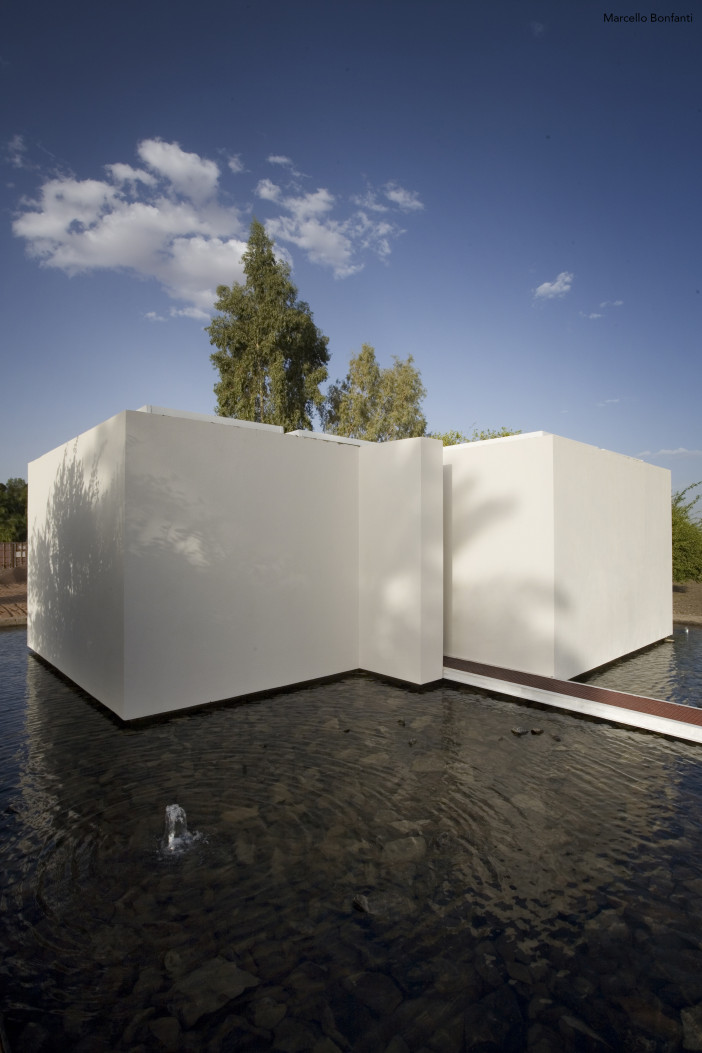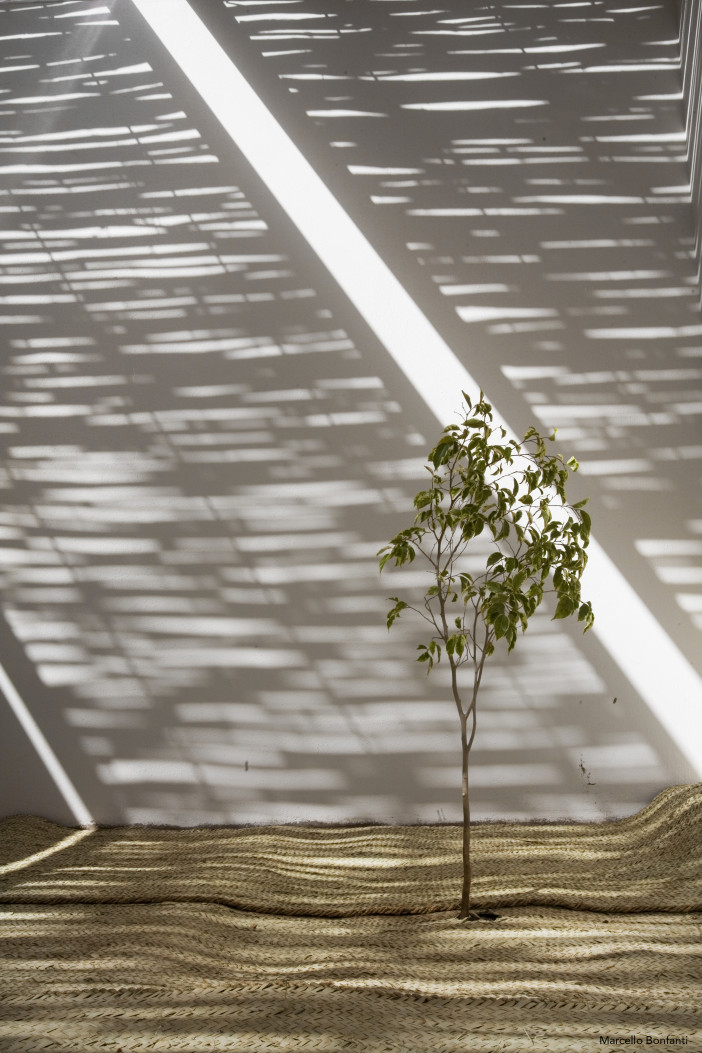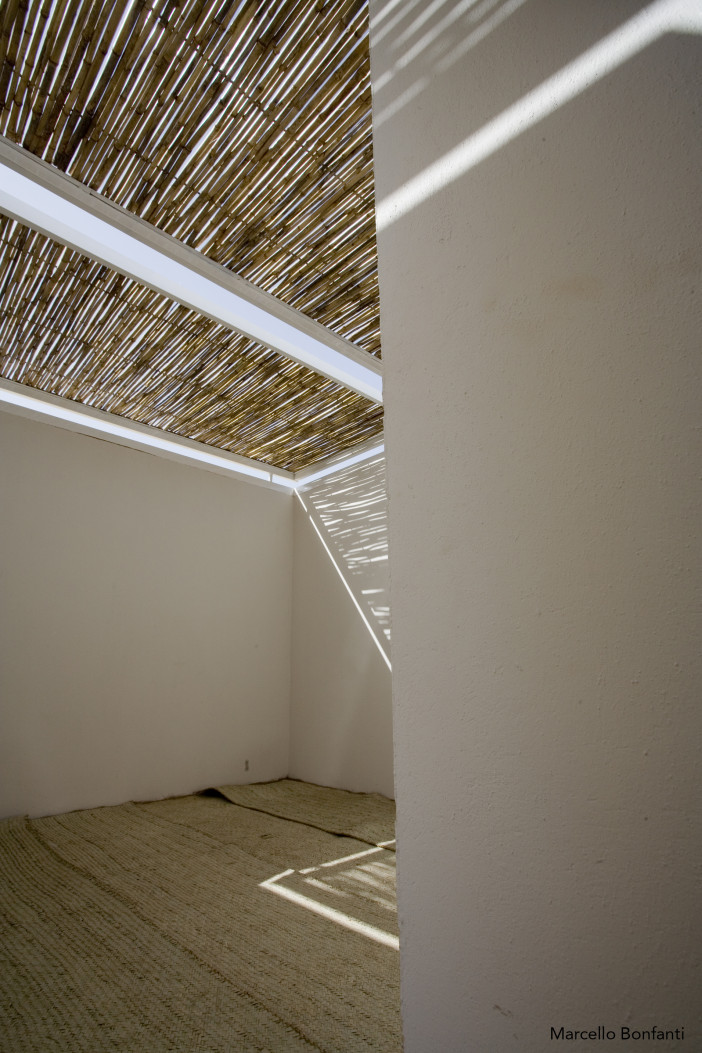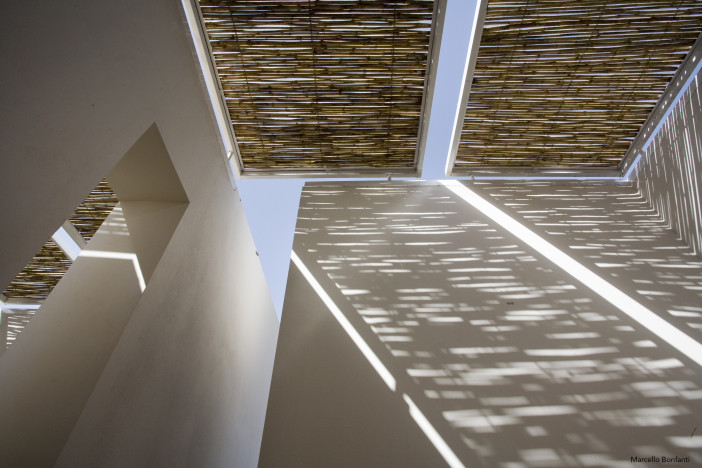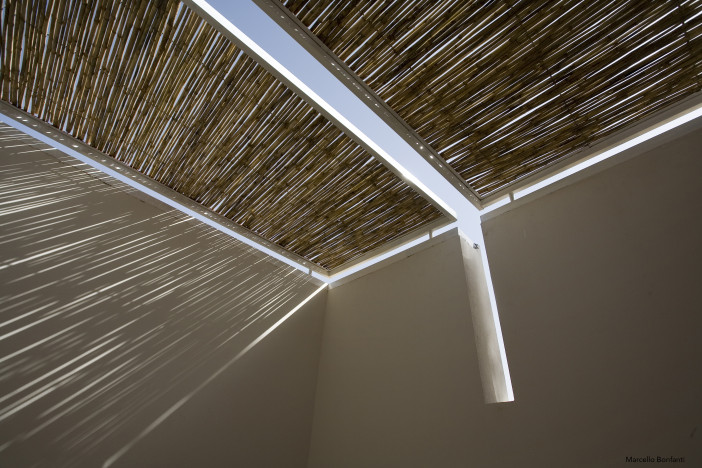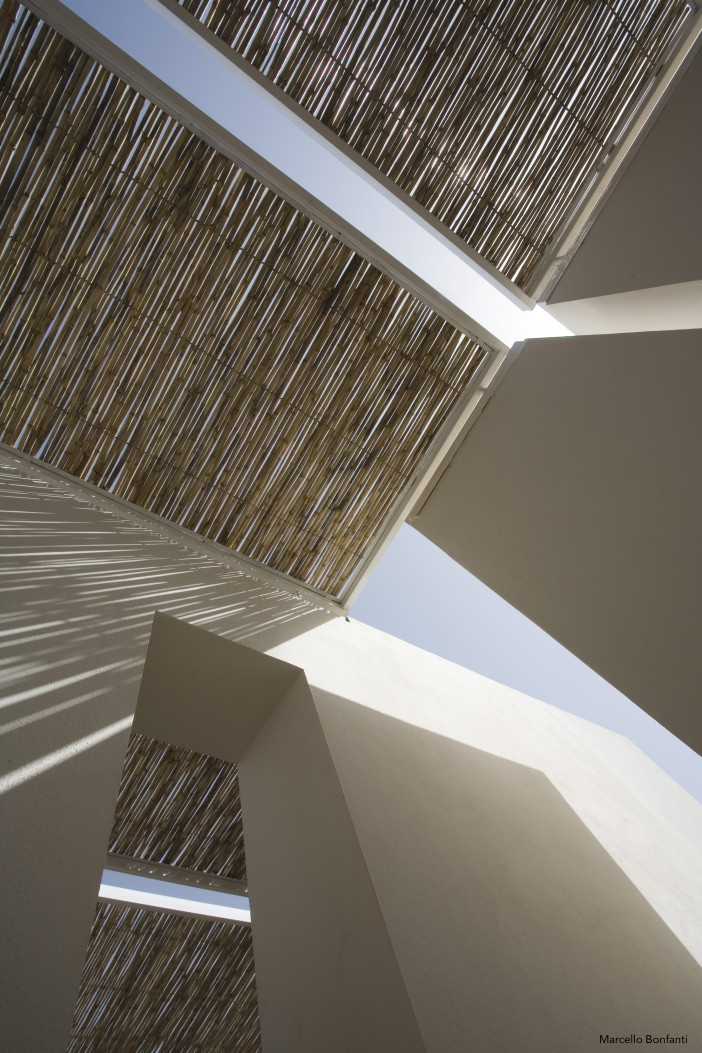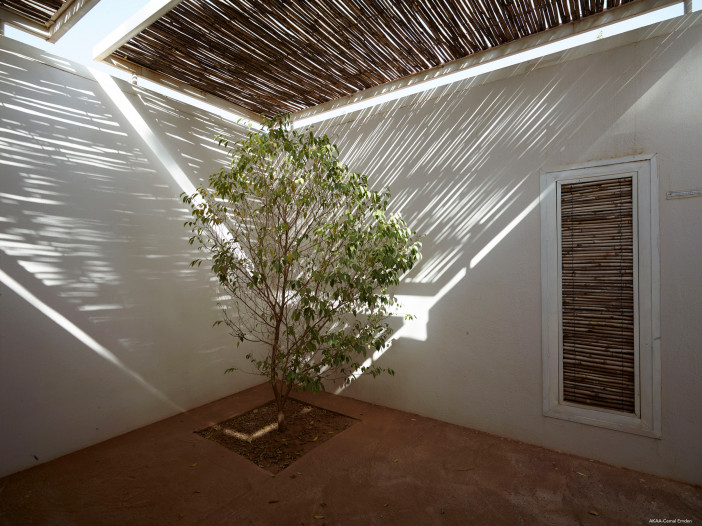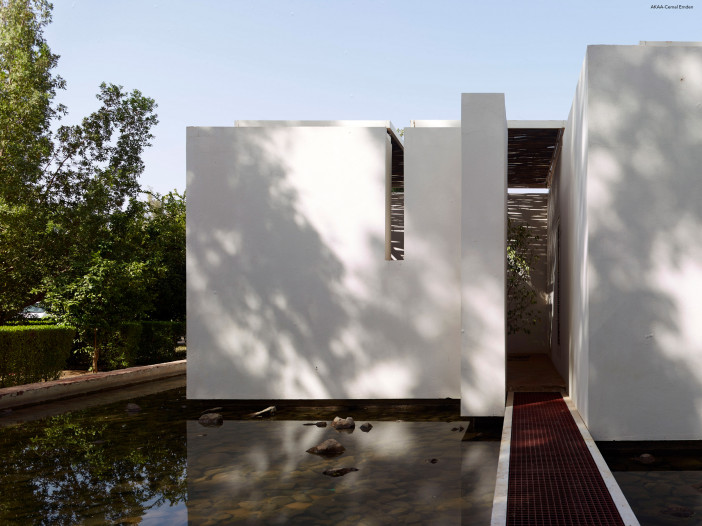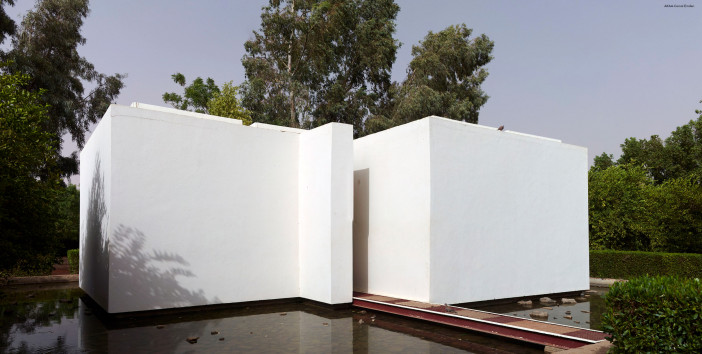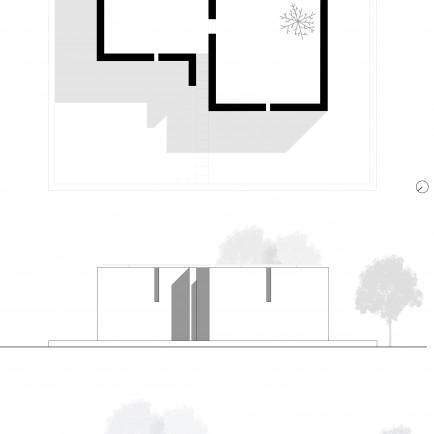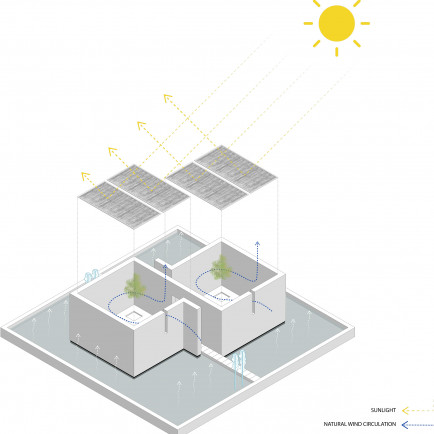Prayer and Meditation Pavilion
History
Urban and Architectural
Description
A Microcosm for All Religions.
The pavilion is a pure volume consisting of two staggered and communicating white cubes, protected by a translucent roof made of palm leaf pith. The interiors, characterized by neutral surfaces painted white, contained two ornamental trees that made these places at the same time sacred and profane, by the presence of a natural element in an artificial space. The few vertical openings along the outer walls allow light to enter, creating delicate patterns of shadow.
A large pool surrounds the pavilion, creating a
spiritual gap between the hospital’s outer macrocosm (and the rest of the
world) and the ventral microcosm intended for prayer. Two walkways traverse the
pool on opposite sides, giving access to the two nuclei of the small building.
Water drawn from the Nile and then reused for irrigation is an element charged
with symbolic values in the sub-Saharan region. Representing purification in
religious terms, it is also the source of life, a vision of salvation in the
arid desert, evoking the Garden of Eden.
Though we did not mean to favor any religion, functionally we had to deal with the Muslim religion, dominant among the Sudanese, and the rules it imposes, such as ablution or the separation of men and women. But we set these rituals in an estranging setting which made them non-dominant, concealing all symbols and elements that could be traced to a single faith.
The space for ablutions, for example, is simply a water spray that rises higher inside the pool, an integrating element without any religious connotation, which enables the faithful to perform their ritual ablutions before entering the place of worship. The asymmetric union of the two volumes in turn allows for the separation of the sexes, giving this functional constraint an added value within the balance of a composition that seeks to embody the idea of tolerance in architecture.
Client: Emergency ngo
Design: TAMassociati
Program coordinator: Pietro Parrino (EMERGENCY ngo)
Site engineer: Roberto Crestan (EMERGENCY ngo)
Photo Credits:
Marcello Bonfanti
AKAA-Cemal Emden
TAMassociati
Details
Location
Al-Doha Street, Al Khurtum, Sudan
Owners
EMERGENCY NGO
Architect Name
Year of Build
2007
Drawings
Map
History
Urban and Architectural
Description
A Microcosm for All Religions.
The pavilion is a pure volume consisting of two staggered and communicating white cubes, protected by a translucent roof made of palm leaf pith. The interiors, characterized by neutral surfaces painted white, contained two ornamental trees that made these places at the same time sacred and profane, by the presence of a natural element in an artificial space. The few vertical openings along the outer walls allow light to enter, creating delicate patterns of shadow.
A large pool surrounds the pavilion, creating a
spiritual gap between the hospital’s outer macrocosm (and the rest of the
world) and the ventral microcosm intended for prayer. Two walkways traverse the
pool on opposite sides, giving access to the two nuclei of the small building.
Water drawn from the Nile and then reused for irrigation is an element charged
with symbolic values in the sub-Saharan region. Representing purification in
religious terms, it is also the source of life, a vision of salvation in the
arid desert, evoking the Garden of Eden.
Though we did not mean to favor any religion, functionally we had to deal with the Muslim religion, dominant among the Sudanese, and the rules it imposes, such as ablution or the separation of men and women. But we set these rituals in an estranging setting which made them non-dominant, concealing all symbols and elements that could be traced to a single faith.
The space for ablutions, for example, is simply a water spray that rises higher inside the pool, an integrating element without any religious connotation, which enables the faithful to perform their ritual ablutions before entering the place of worship. The asymmetric union of the two volumes in turn allows for the separation of the sexes, giving this functional constraint an added value within the balance of a composition that seeks to embody the idea of tolerance in architecture.
Client: Emergency ngo
Design: TAMassociati
Program coordinator: Pietro Parrino (EMERGENCY ngo)
Site engineer: Roberto Crestan (EMERGENCY ngo)
Photo Credits:
Marcello Bonfanti
AKAA-Cemal Emden
TAMassociati


